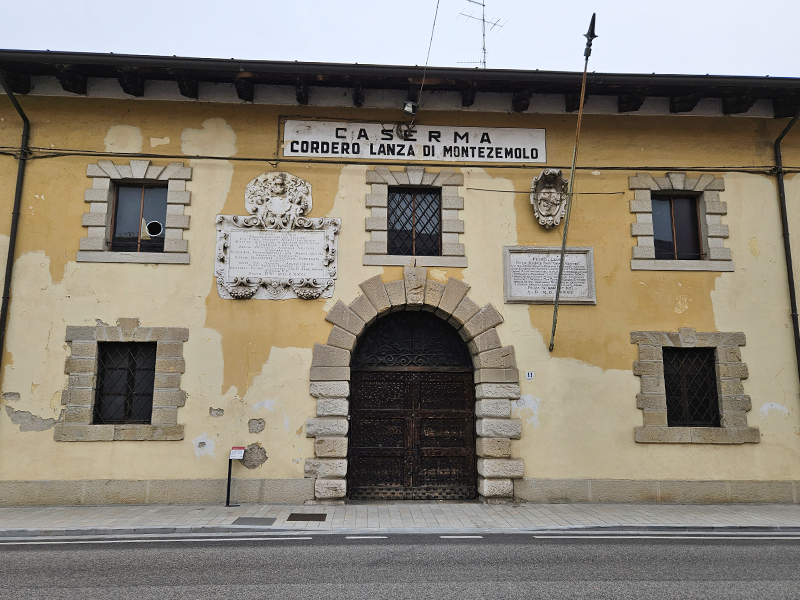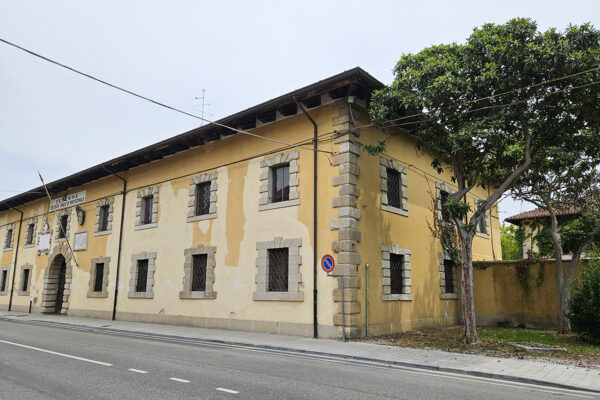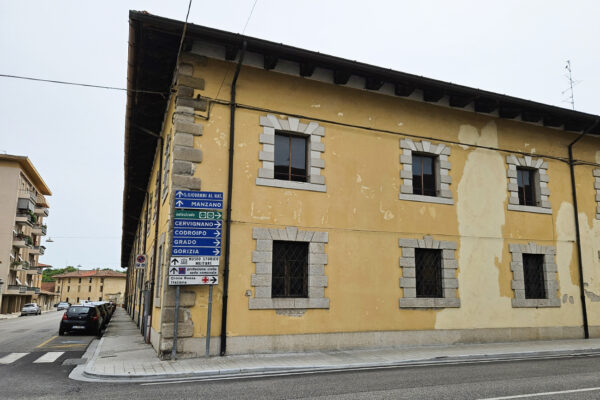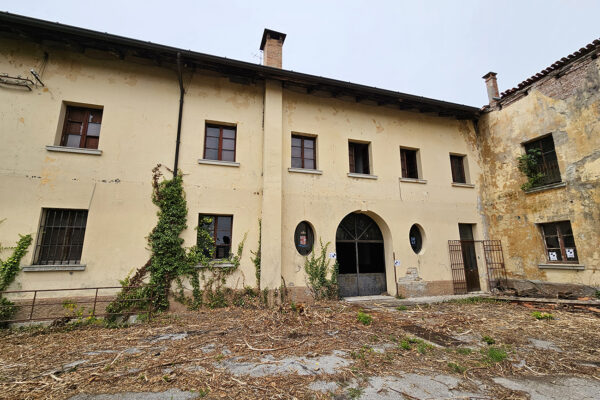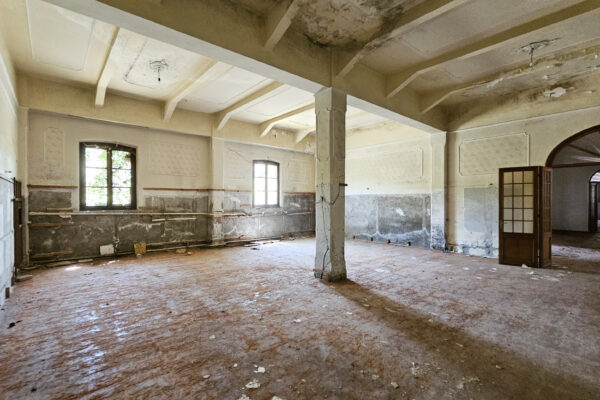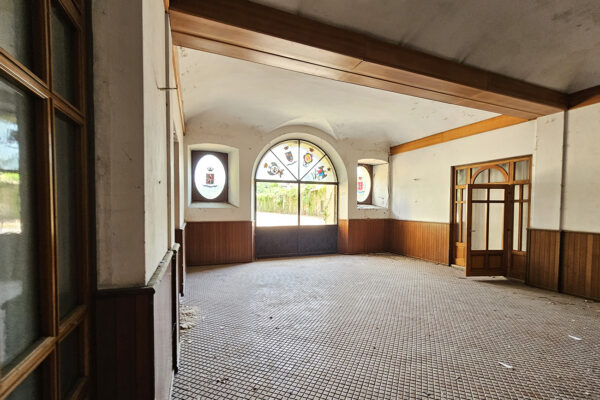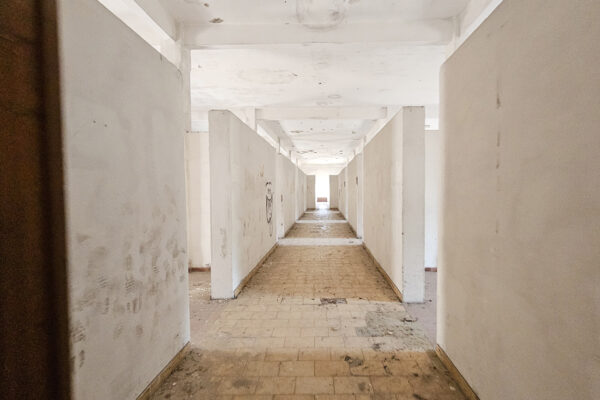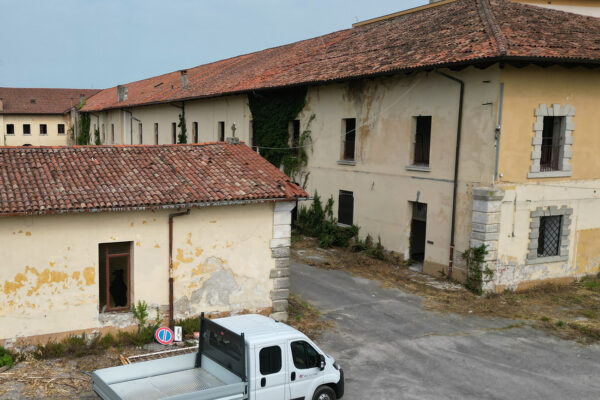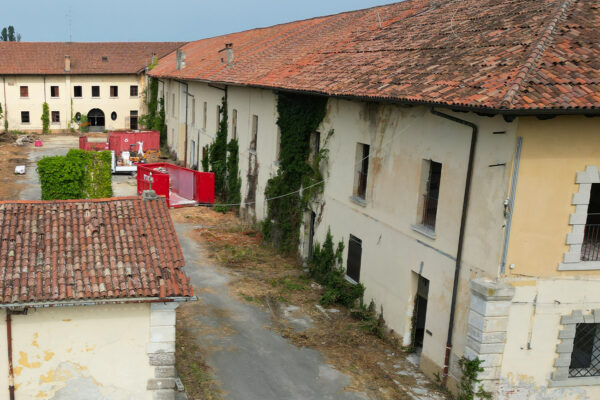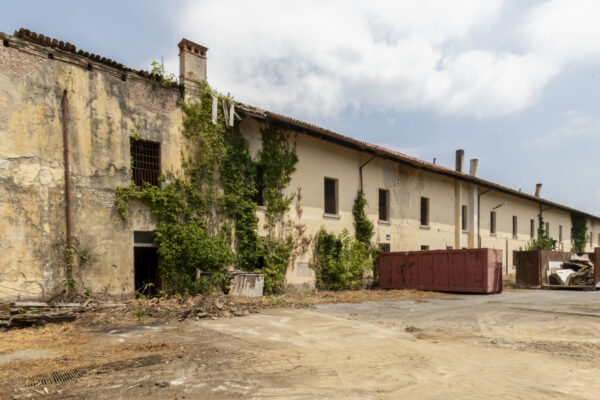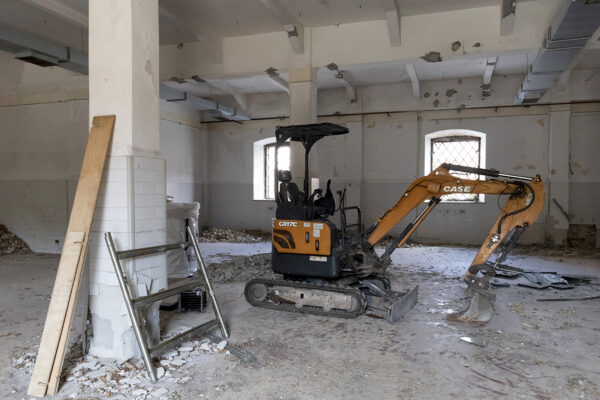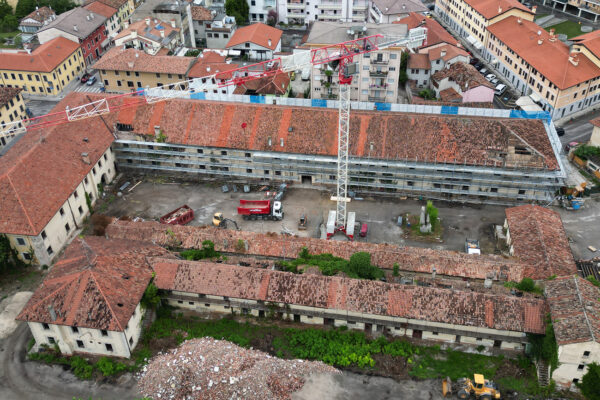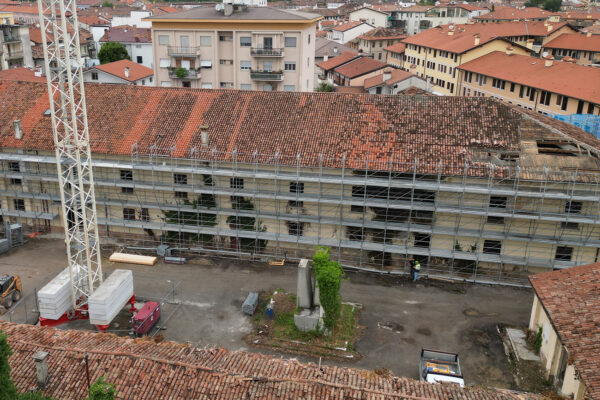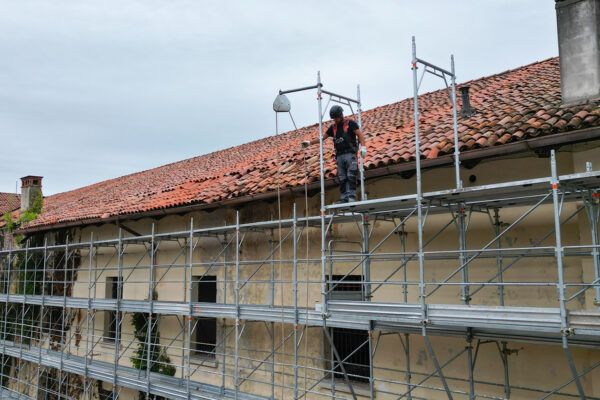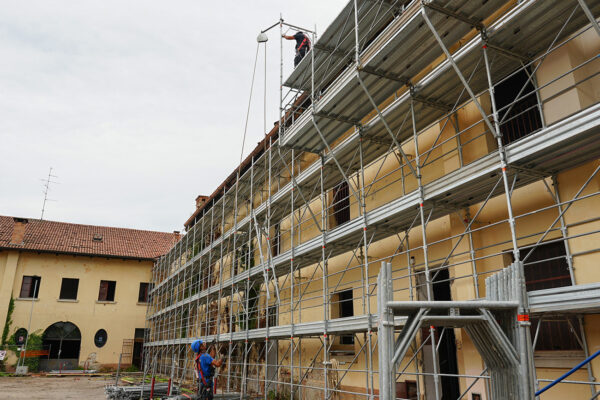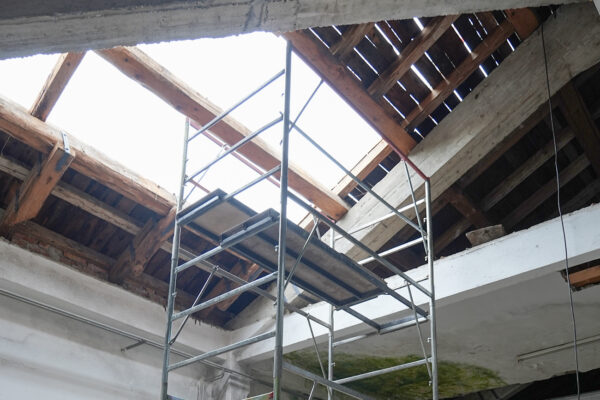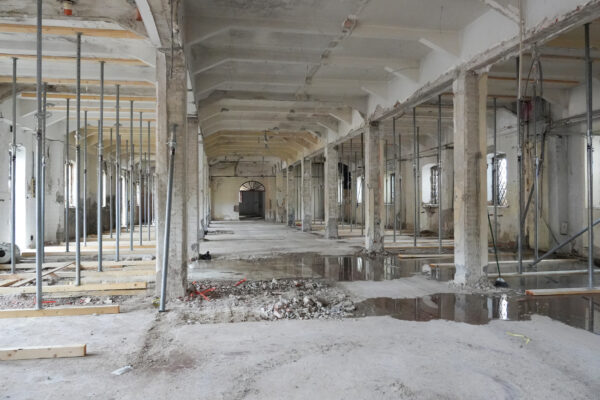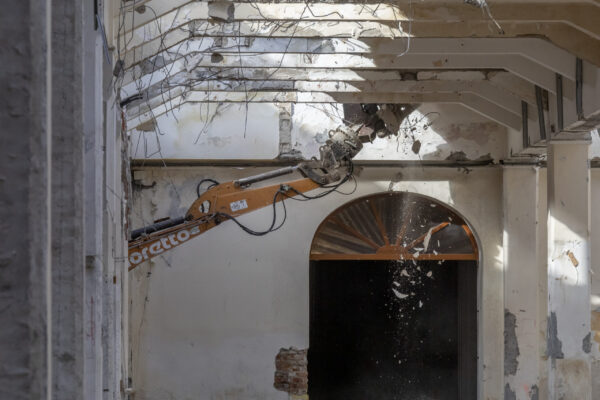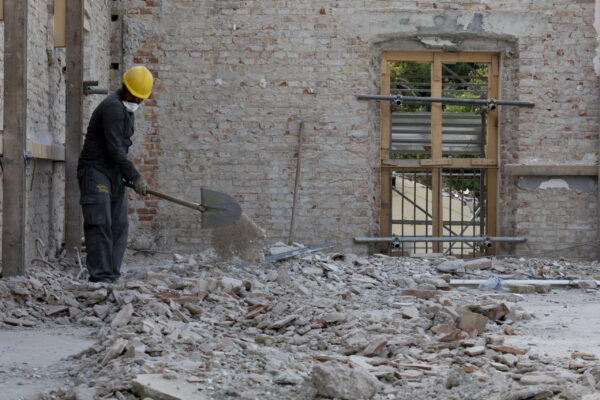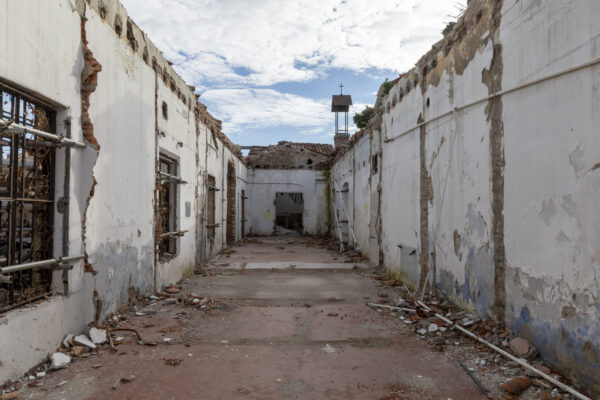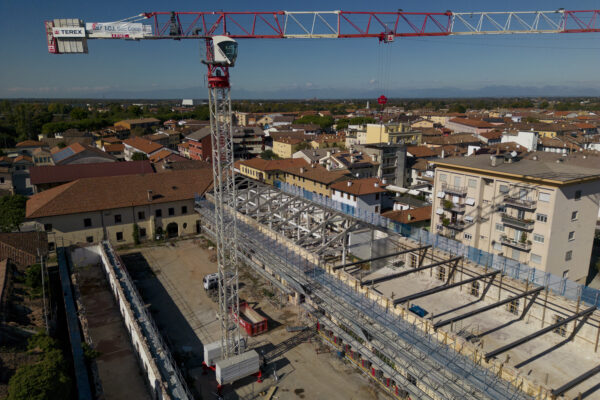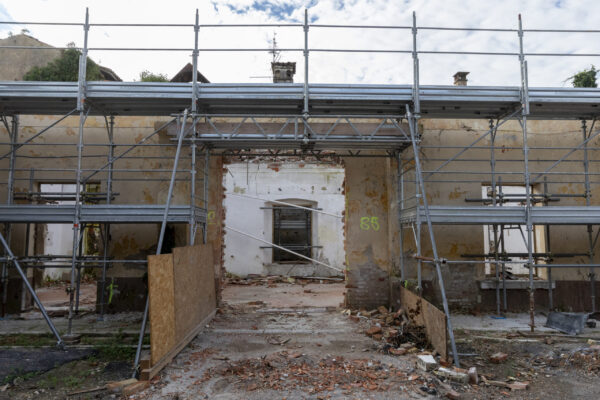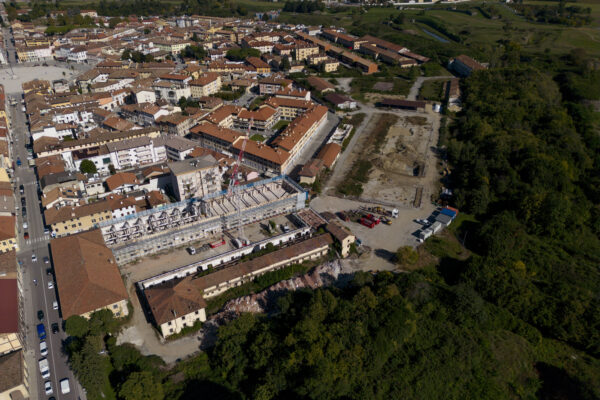Built starting in 1596, the Montezemolo Barracks were initially known as the ‘Deposito delle Monizioni’ (Depot of Monitions) or ‘Fontego Pubblico’ (Public Warehouse).
With the city passing under the control of the Austro-Hungarian Empire and then the Kingdom of Italy, the depot changed function: from a weapons warehouse it became a barracks, named Montezemolo in honour of the famous officer and patriot of the Second World War.
The Montezemolo Barracks covers an area of approximately 50,000 square metres, together with other complementary building complexes. It is located at the entrance to Porta Aquileia, one of the city’s three gates. Its L-shaped layout runs along Via Lion and Via Aquileia, which can be reached from the main entrance by walking through the covered gallery that connects the inner courtyard to the entrance.


